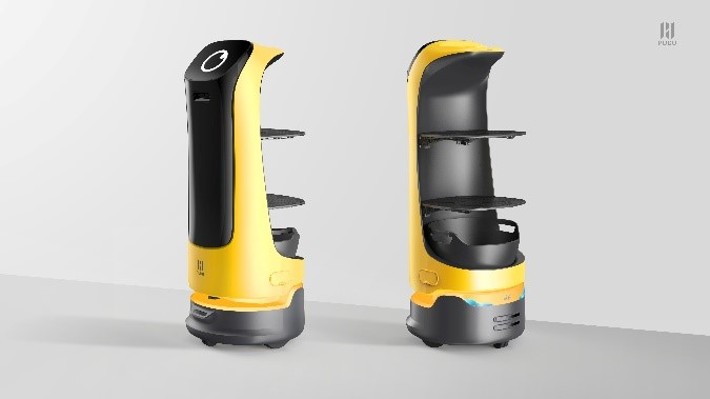[ad_1]
Hong Kong’s omicron outbreak is dealing a double whammy to businesses.
Not only will new social distancing curbs crimp revenue for retailers and restaurants, a slashing of flights they rely on to bring everything from Australian cherries to wagyu beef into the financial hub is set to raise costs and boost inflation.
Cathay Pacific Airways Ltd., the city’s most connected airline, has canceled hundreds of flights. Cargo capacity could drop below one-fifth of pre-pandemic levels. Logistics costs may surge by 40% within three weeks. Importers expect the price of fruit to rise by 10%.
In pursuit of a “COVID zero” strategy, Hong Kong has shut bars, gyms and cinemas. At the same time, an already fractured supply chain for a city that imports most of its goods has reached a breaking point, with businesses seeing delays in deliveries of staples such as berries and yogurt and of premium seafood and cheeses.
The threat of an omicron-driven surge has spooked Hong Kong, where the vaccination rate is among the lowest for developed economies. Though officials have found only dozens of cases in the community so far, they’re tracking at least three separate transmission chains.
Amid fear of the omicron variant, the government has scrapped aircrew quarantine exemptions it was previously giving, forcing Cathay to cut cargo flights. The airline will operate only about 20% of its pre-pandemic capacity this month due to a lack of manpower. Passenger flights were also banned from eight countries, including the U.S., U.K. and Australia, further reducing cargo capacity.
Those two separate blows are creating “a severe shortage of freight space,” said Gary Lau, the chairman of the Hong Kong Association of Freight Forwarding & Logistics.
Businesses heavily dependent on imports are bearing the brunt of the disruptions. Suppliers expect shortages of everything from eggplants to lobsters. Flowers from Europe for the upcoming Lunar New Year could also be in short supply, as well as fruits and vegetables flown in from places like the U.K. and the Netherlands.
Hong Kong’s retail and restaurant sectors, which had just started to recover after months of prior restrictions, may now miss a peak spending window during the Chinese holiday season. Sales from both sectors reached 326 billion Hong Kong dollars ($42 billion) for the first three quarters of last year after the city relaxed social distancing rules. That figure was almost 30% lower than the same period in 2018, the last year before a series of protests gripped Hong Kong, causing further economic damage.
Many businesses are weathering logistical nightmares. Richard Poon, the managing director of On Kee Dry Seafood, said orders for canned abalone and conch were stuck in Australia. His team now relies on air freight for more than 30% of their supply, he said, adding that the shop increased orders delivered by plane around November to prepare for the holidays.
“The supply will now be even tighter,” he said. “We are concerned we may run out of some goods to sell to customers.”
Jacques Derreumaux, the co-founder of Cheese Club and WHAT’sIN, delivery services that offer French cheeses and fresh fruits and vegetables, said he has resorted to rerouting shipments through limited cargo flights now that passenger flights from France have been banned. Continued disruptions to air travel would “become very problematic for all importers” if prolonged, he said.
The price of ‘COVID zero’
Hong Kong’s strict virus rules are largely aligned with those of mainland China, which still maintains zero infections as its goal, even while most of the world adjusts to living with the virus. Yet the city of 7.4 million relies on imported goods for survival in a way that the vast mainland does not, raising concerns that a virus strategy that demands isolation is unsustainable.
Travel restrictions will ultimately translate to a spike in retail prices, said Michael Li, the vice honorary secretary of the Hong Kong Chinese Importers’ & Exporters’ Association. Li predicted longer delivery times and a possible rise in transport costs of about 30%.
Consumers may see fresh flower prices surge 20% to 30%, for instance, because they are typically flown to Hong Kong from Europe, Li said. Prices may also rise in Japanese restaurants, which use premium seafood ingredients, as well as Chinese restaurants that provide seafood feasts during festivals.
Lau, of the Hong Kong Association of Freight Forwarding & Logistics, said there are already signs that “the air logistics chain is collapsing.”
“As long as the government doesn’t ease its pandemic control measures, we believe the situation won’t change in the short term,” he said.
In a time of both misinformation and too much information, quality journalism is more crucial than ever.
By subscribing, you can help us get the story right.
SUBSCRIBE NOW
[ad_2]
Source link




















